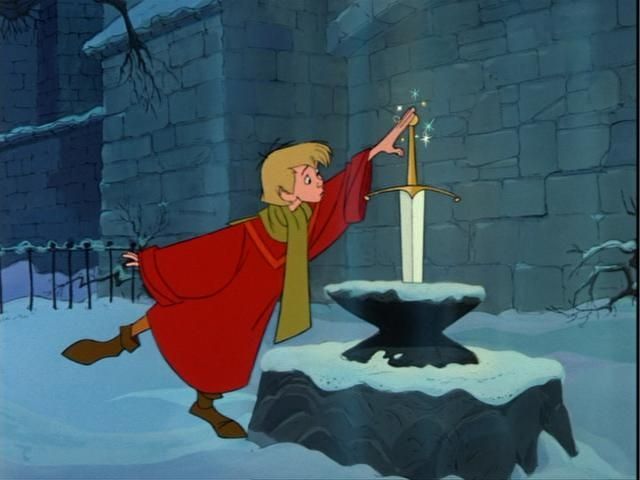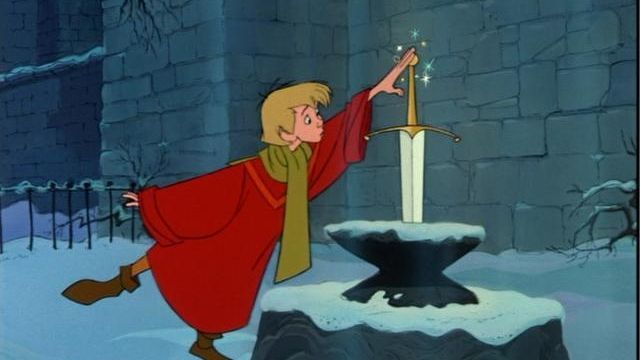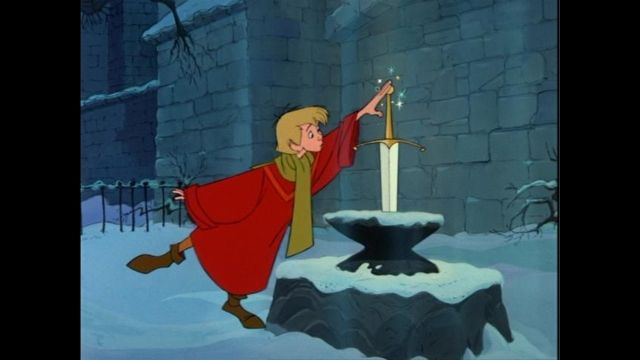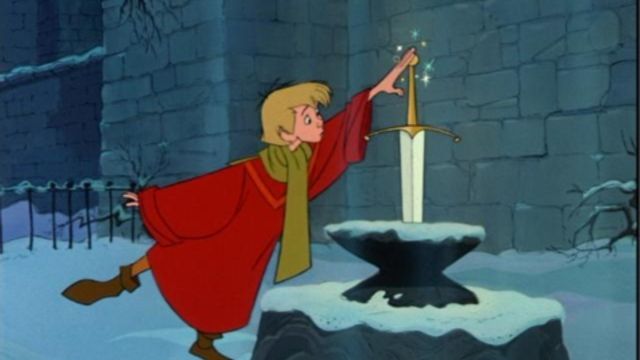That's wrong. They didn't chop anything off, they opened the picture for those theaters, that hadn't any widescreen equipment.
Um, what? Yes, they did chop the picture off. It was animated Academy ratio, the only way to make it widescreen is by cutting part of the picture off. No ifs, ands, or buts. Something like Finding Nemo is a different story, where they re-framed it for the fullscreen transfer after the movie had already come out - granted that's quite a bit easier when it's a computer-animated movie and you can just expand the render area.
And why would they even chop anything off, instead of showing everywhere the 1.37:1 version, if that was the version they preferred? It doesn't make any sense. 1.75:1 doesn't even use the full screen!
You clearly don't understand how cinemas work. And by the time Jungle Book came out, most theaters had adapted their equipment to widescreen, which is why they cropped it for those theaters. Usually the height of the screen is standard (since, I mean, you can't exactly raise the ceiling), but depending on how wide the movie is, they will move the curtains on either side to compensate. I have seen this done even today with digital projection, when I walk in earlier and the theater workers are adjusting the ratio of the screen.
Unlike Sleeping Beauty or Lady and the Tramp, which were special presentations which had special equipment just for those films, the theater would have been able to adjust their matting to make a 1.75:1 film appear on the screen properly so that nobody would see any bars.
So yes, it WOULD use the full screen. The reason that most people got the false illusion that "widescreen has more picture" is because of what I said - you can't make the screen any taller once the theater has already been built, but you can use more room on the sides of the screen to show more picture. Mathematically speaking, the most picture you can ever have is a square (1:1 ratio), which Academy is much closer to.
We are talking about backgrounds most of the time, and those backgrounds had to be huge anyway, because there is camera movement. It was an artistic decision to go for 1.75:1, which should be respected. Don't speak for the artists, if you don't know that.
But do YOU know that? I don't think anybody *who actually worked on the film* has addressed what the proper ratio should be. Sure, someone at Walt Disney Home Entertainment who wasn't even ALIVE when the movie came out could say "oh, it's meant to be widescreen" and most people would eat that up and consider it an official statement.
Yeah, right, because it was totally unusual to release widescreen-films in 1.33:1 on VHS and it had nothing to do with the ignorance of their audience, who just didn't want to see black bars on their TVs.
I have bolded the relevant statement here. This is why Jungle Book was widescreen on the newer DVD master. I remember there being discussion here of 101 Dalmatians also being in widescreen (as the preview showed), but obviously enough people complained and they kept it 4:3!
Also, it's worth mentioning - take the first Harry Potter film as an example. Someone told me that it was filmed open-matte because the studio made it on a budget (and anamorphic cameras cost more, even around the turn of the century). However, compare the widescreen and fullscreen DVD transfers and you'll see that the fullscreen version is pan-and-scanned from the widescreen one. That would be a clear example that they DON'T want you to see the matted areas, since they were not artistically meant to be in the movie. Disney could have done the same, like they did with Sleeping Beauty, and cropped these films from 1.75:1 if the expanded frame was really not meant to be seen.
As a matter of fact, there isn't even any film format they could have used to film directly in 1.75:1, so they HAD to film more than they needed.
This I am aware of. But the fact of the matter is that they did take the time and effort to animate the full picture (whether for outdated theaters or not is irrelevant), and in my opinion that deserves to be seen. It doesn't look sloppy at all like it could have.
Why would Disney even release this film (or Robin Hood and others who were shown originally in widescreen) in 1:75:1 (or 1.78:1) for Blu-ray, if this wasn't its intended aspect ratio in the first place? They had no problem to release all the other films from the pre-widescreen-era in their original 1,37:1 aspect ratios.
I will just refer to what you said earlier about the ignorance of their audience, and what Mollyzkoubou (who is in full agreement with me on the fact that Jungle Book's intended OAR is 1.37:1) said.
Movies like Snow White and Pinocchio are more regarded as timeless classics, and Disney wouldn't hear the end of it if they tilt-scanned those films. They probably figured there wouldn't be as big of a reaction if they cropped The Jungle Book, but judging by this forum's userbase we can clearly see that this isn't true.

Like I also mentioned earlier in this post, look at 101 Dalmatians - the preview for that was in widescreen, but they decided to leave it alone for the DVD releases, probably because people complained about the cropping like they did after Jungle Book was released.
One last example I will use is The Sword In the Stone. That's from the same era, and Amazon lists that the upcoming Blu-Ray will be in widescreen. (There were also rumors of the anniversary DVD being widescreen too, which ended up not being true). But then look at iTunes and Xbox Live - both of those are offering the film in high-definition in fullscreen ratio! Disney obviously gave them the fullscreen masters, but I won't be surprised if the Blu-Ray is cropped due to ignorance.
Let's fight to get the 1.33:1 version of Sleeping Beauty back, because it was on VHS and has to be right. Right??
See, the difference here is that I can re-crop a movie if I wanted to, using a computer. It's not hard to do. But you can't add picture that was removed back in. You guys could just as easily take a fullscreen transfer of The Jungle Book and chop the top and bottom off to get the "widescreen version" if it bothers you so much.
This is why getting the Academy laserdisc of Lady and the Tramp was such a big deal, because it WASN'T just cropped - it was actually drawn differently.
--Edit--
Looks like Scamander replied faster than I could, so let me comment on this too.
Then Disney would release all of their films (new and old) in 1.78:1 on Blu-ray, which -as a matter of fact- they don't. They release all of their films in their original aspect ratios, with only small adjustments, if the OAR fills nearly the whole screen.
OH REALLY NOW?
Let's take a look at most of the 60s-80s films on Blu-Ray (and/or the newest DVD releases if no BD exists).
Starting after Sleeping Beauty (as that one was super-wide):
101 Dalmatians - Preview was widescreen and likely only kept fullscreen due to complaints
The Sword In the Stone - as I mentioned, this is 4:3 on iTunes and Xbox Live but the Blu-Ray is said to be WIDESCREEN
The Jungle Book - WIDESCREEN
The Aristocats - WIDESCREEN
Robin Hood - WIDESCREEN
Winnie the Pooh - I would be willing to bet that the only reason they plan on keeping this 4:3 is because it was essentially just four shorts (made earlier) re-compositioned for a movie.
The Rescuers - WIDESCREEN
The Fox and the Hound - WIDESCREEN
And that wraps up the list of intermediary films, as The Black Cauldron was once again super-wide and then they started using widescreen natively starting with The Great Mouse Detective*
*However, rumor has it that GMD is also meant to be Academy ratio, since it wasn't CAPS yet like the following films were.
So as you can see, all the "modern classics" with the exception of 101 Dalmatians are, in fact, cropped to widescreen for their newest releases. Also, considering that the first-ever DVD ever released (Twister) was ANAMORPHIC WIDESCREEN, there was no practical reason for Disney to release open matte versions on DVD
unless they were meant to be viewed that way. Otherwise they would have done a pan-and-scan job on early Limited Issue releases such as Hercules, Little Mermaid, etc.
They aren't all 1.75:1 but they're all in some form of widescreen one way or another... we'll have to see what happens when The Sword In the Stone and Winnie the Pooh are out for real.




